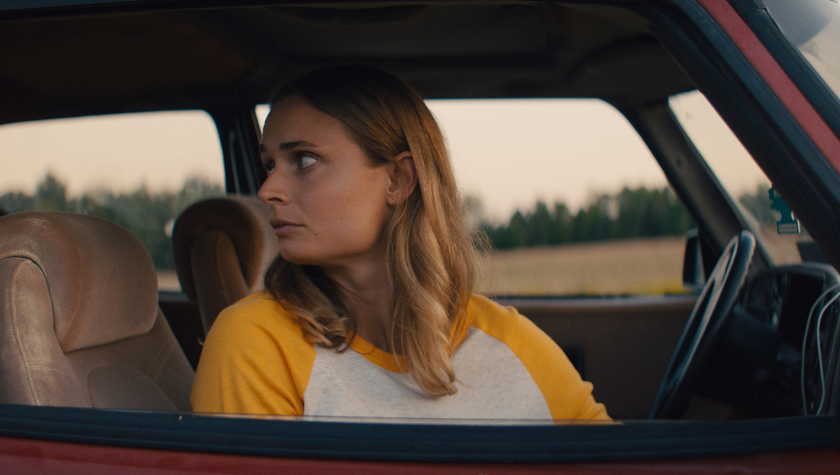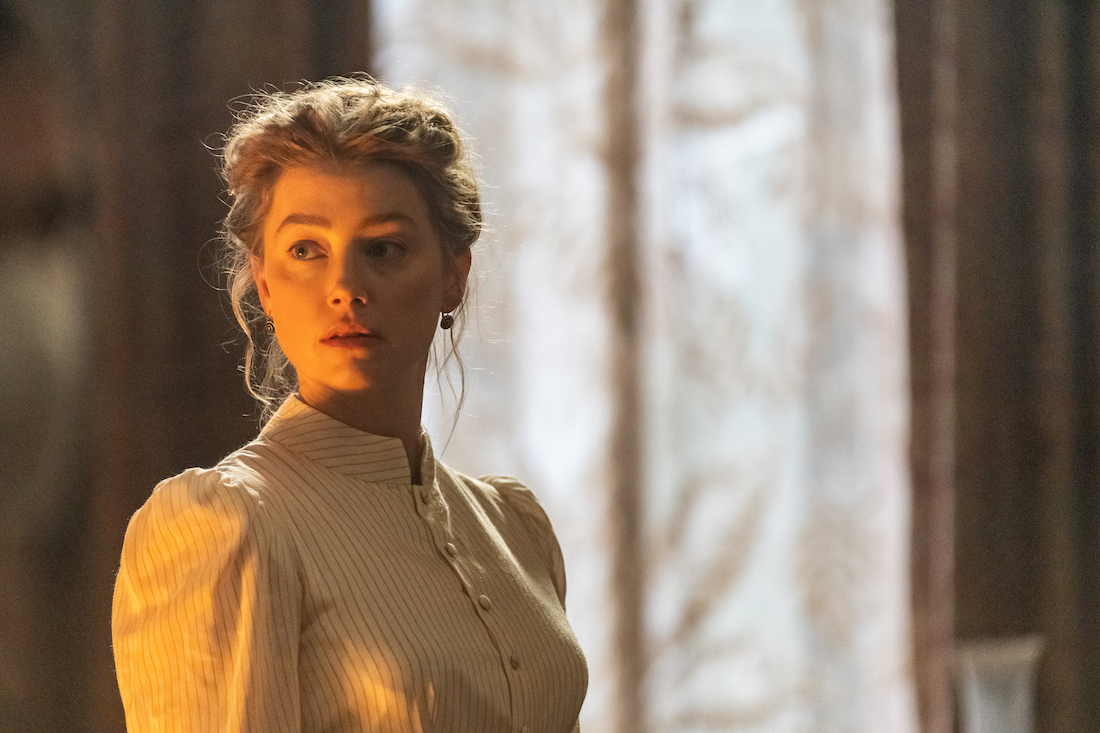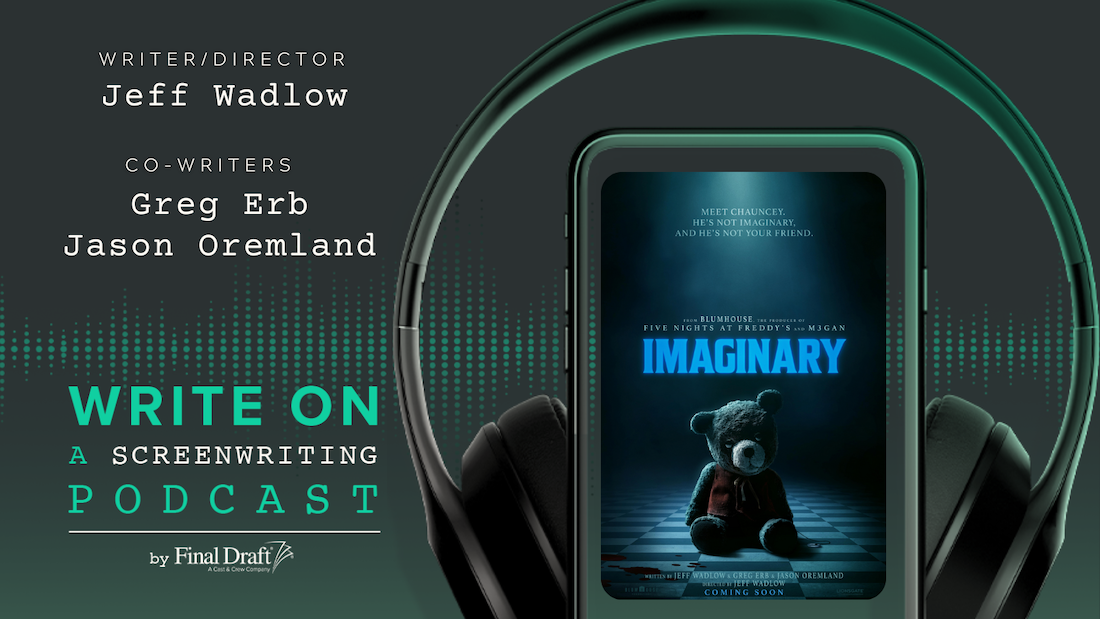Part I: 'The Hole in the Ground' Writer-Director Lee Cronin on Getting Your Hands Dirty When Writing
March 12, 2019
Irish writer-director Lee Cronin’s passion for horror films culminates in his debut feature film, The Hole in the Ground. Co-written with Stephen Shields, the story centers around Sarah O’Neill (Seána Kerslake), who flees an abusive marriage and moves to a remote countryside house with her young son, Chris (James Quinn Markey). But what should be a bucolic escape turns sinister when Chris goes missing one night, and thereafter he just seems… different. Sarah begins to wonder if she’s losing her mind, or if Chris has fallen victim to a malevolent hole that lies deep in the woods; the very same one a local madwoman blames for stealing and replacing her own son years ago.
Cronin developed an appreciation for horror early in life. “Jaws, The Shining, Poltergeist, Evil Dead, Evil Dead II; they were all in the locker by, like, eight or nine [years old].” That interest grew into a purpose. “It led me to writing ideas for movies. By the time I finished school, I knew specifically what I wanted to do, and I went to film school.”
However, Cronin was more interested in gaining work experience than writing his own films at the beginning. “I’ve done a lot of jobs in the industry,” he says. “I’m not saying I’ve done it all, but I feel I have worked my way up from the beginning.”
In the process he met, “good, like-minded people, and we collaborated to make some short films.” Those shorts include Ghost Train, which earned awards including the Youth Audience Award at Fantastic Film Festival, and Best Film in the San Sebastian Horror & Fantasy Film Festival.
The initial gestation for The Hole in the Ground started as Cronin was doing post-production on his last short.
“It wasn’t a ‘bang’ moment. It was a series of different [ideas] that converged.” One of which was an article Cronin read about a man in Florida who had been killed by a sinkhole. “There’s something about the earth just swallowing you that feels quite supernatural.”
Meanwhile, Cronin recalls, “I was developing the idea of a mother and son, and the mistrust that might exist between them in a post-traumatic experience. About how you kind of have to get to re-know each other a little bit.”
Though Cronin had the title in mind, “The Hole in the Ground is probably the most difficult thing I’ve developed. I’ve developed other feature films, I’ve written other screenplays; but this is the one that got made, though it was the trickiest one to actually develop and define.” Cronin felt that added effort was valuable. “It’s a real acid test when you’re willing to keep picking and pushing at an idea.”
“In making a horror film, the first thing that I looked at, the core of it, was: ‘How can I connect with people? How can I scare them?’” Cronin continues, “The thing that I was looking for with The Hole in the Ground was this idea of everyone has a loved one in their life, and everyone’s had a moment with that loved one where they’ve just looked at them and wondered, did they really know them at all?”
“In the case of The Hole in the Ground, it’s that they look the same, they move the same, they sound the same, they smell the same. Everything seems the same, but something at your very core tells you that that’s wrong, that’s not the person you think they are.”
He sums it saying, “That was the primal, human thing that I was trying to get my hands dirty with. That’s always one of the most terrifying things to me.”
Once the concept was cemented, it was time to start writing. “As is my process, I tend to write these rather large, ambitious scripts to begin; probably too much story, too many ideas. Then I let it sit for a while.”
Cronin was working in advertising at the time. He felt the moment had come to leave that industry behind, and focus on getting his first feature made.
“I brought in a writing partner, Stephen, who had reached out to me.” Cronin and Shields initially connected on Facebook regarding a technical question about Final Draft software. For a while, they worked on other projects, including a TV pilot. The Hole in the Ground was still in the development process, so Cronin asked Shields to give it a look.
Besides the script, Cronin had distilled the store down to a one-sheet. “It was a kind of, ‘this is what I want the film to be.’ Then we just set about the task of getting it right.”
On the value of co-writing, Cronin says, “A fresh perspective is always helpful. Some people can say, ‘I wrote a screenplay in two weeks,’ but that’s not really my process. It’s good to have somebody else there to bounce off, to bring fresh ideas, and to challenge you, as well. I think that’s the key thing about working with other people, is you’re challenging each other.”
“You could always write longer, and write more, but there’s always a tipping point where… you just have to jump off.”
Cronin says, “Once we kind of put our heads down, it all happened quite quickly. We started working together at the end of 2015, developed through 2016, went into prep in early 2017, shot it in 2017, then it spent a year in post.” Production itself was a five-week shoot, with two of those weeks in the house that served as the primary location.
“Now I’m trying to develop a slate of three or four different things,” Cronin states in terms of what’s next for him. While he saw value in co-writing, there are still some projects he enjoys tackling alone.
“For example, I have one project that I’m very passionate about, and I set myself a deadline that before I got on the plane to travel to Sundance, I’d have a draft finished. I was done the day before I flew. It’s not something I would share with anybody, as it needs a few more weeks of polishing, though it was important to at least have something that was close to being ready.”
Written by: Michael Kuciak
Michael Kuciak is the writer-director of the forthcoming horror film DEATH METAL. He's from Chicago.



